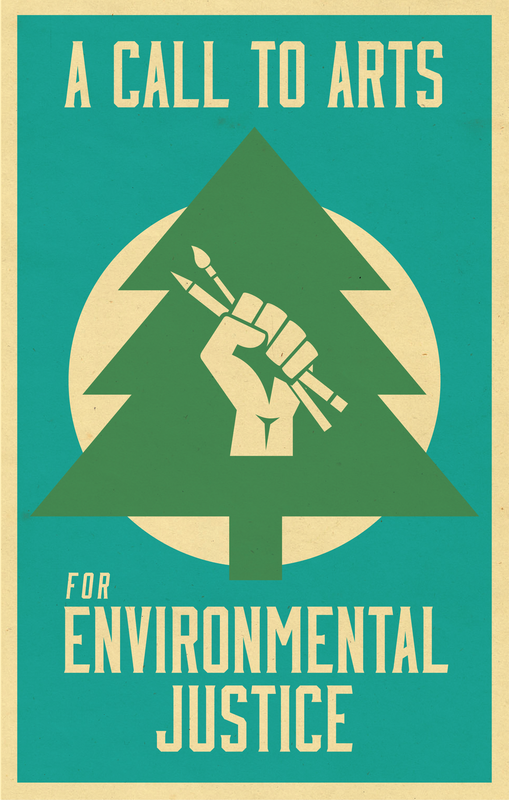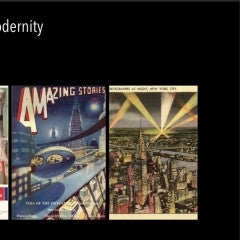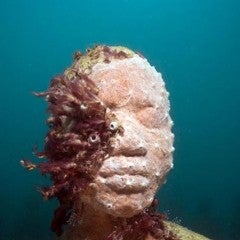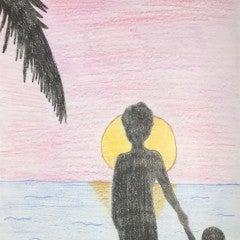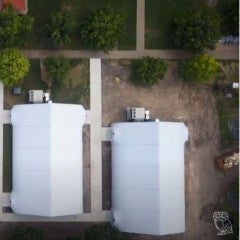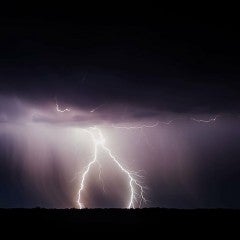“Transition is inevitable. Justice is not.”
This slogan, popularized in the climate justice movement by organizations like Movement Generation and the Climate Justice Alliance, has animated my “Environmental Justice in Literature and Culture” class at the University of Wyoming over the past two years. The course proceeds from the assumption that while we are collectively experiencing a time of unprecedented environmental transition, those rendered vulnerable by structural inequities are poised to experience the worst impacts of the transition. The course is framed around just transition, a concept rooted in the U.S. labor and environmental justice movements to describe an alternative economic paradigm predicated on sustainability, economic and social equity, and climate resilience. Just transition has become a buzzword in policy discussions in recent years, especially in relation to efforts to move away from fossil fuel energy regimes. It has also become a key plank in climate justice platforms, including the Green New Deal.
In my class, students explore how narrative and storytelling can help low-income communities and communities of color imagine equitable, sustainable futures. To paraphrase Julie Sze, culture matters in environmental and social struggle. The working thesis for the class is that cultural representations are critical for imagining a just transition because 1) they serve a documentary function, providing insight into complex historical factors driving environmental justice and 2) they function as a form of scenario-imagining, providing communities a platform to plan for a just transition responsive to specific histories of violence, trauma, and exclusion. For example, in our Environmental Racism unit students study the Flint water crisis through the lens of racial capitalism, watching University of Michigan playwright José Casas’ play Flint and reading the scholarship of Laura Pulido. To think through what a just transition might look like in Flint, they read Robin Kelley on the Black radical imagination and “freedom dreams” and discuss the mural art of the Flint Public Art Project. In our Indigenous Environmentalisms unit, students read Chickasaw writer Linda Hogan’s novel Solar Storms; study Kyle Whyte (Potawatomi) on settler colonialism and collective continuance and Dina Gilio-Whitaker (Colville Confederated Tribes) on indigenizing environmental justice; and listen to the music of Indigenous hip-hop group A Tribe Called Red. In our unit on the Global South, students watch Carolina Caycedo’s short film Yuma: Land of Friends and read Macarena Gómez-Barris to learn about the “submerged perspectives” of Indigenous artists and activists responding to the damming of the Magdalena/Yuma River in Colombia.
The course, which I’ve taught twice, is an upper-division elective cross-listed as an Environment and Natural Resource (ENR) class and an English class. ENR is a concurrent degree program and the University of Wyoming’s equivalent of an environmental studies major. Prior to my arrival, an EJ-focused course had not been taught for several years and was not a graduation requirement for ENR majors despite evident interest among students. Both times I’ve taught the course, it filled quickly and enrollment skewed toward ENR students, many of whom were concurrently majoring in STEM fields and eager to broaden their disciplinary horizons. The course’s cohort of English majors, while smaller, has played a critical role in complementing the environmental knowledge of ENR majors through their aptitude for close reading and literary and cultural analysis. Given the disciplinary diversity of my students, the first three weeks of the semester are dedicated to parsing the complex histories of environmental justice and labor activism in the United States and foundational topics in critical environmental justice theory and the environmental humanities. Students read scholars like David Schlosberg, Julian Agyeman, Jedediah Purdy, Julie Sze, and Joni Adamson and familiarize themselves with the platforms of major EJ organizations.
To help students think through undeniably difficult issues, I assign Life Writing Journals. Scholar-activist Giovanna Di Chiro describes “life-writing” as a genre “embodied in personal struggles and life choices” that endow a sense of “active hope.” Within the context of environmental and social justice, she argues, life-writing can be a powerful way to see ourselves as “social and environmental change agents” rather than passive observers, deniers, or cynics. In their journals, students can take a standard or creative approach to reflection, recording their reactions to class readings and discussions and their thoughts on how they might become social and environmental change agents through daily practices, civic engagement, and their professional trajectories. They are encouraged to reflect on the ways their life experiences and personal beliefs influence their views on environmental and social justice. Some ENR students are already familiar with this type of exercise from taking our Environment and Society course, which asks students to trace the origins and implications of their environmental values.
Life Writing Journals are designed to serve as an “incubator” of ideas to support students’ final Just Transition Projects. Students are asked to consider the Climate Justice Alliance’s definition of just transition as a set of strategies and practices “to build thriving economies that provide dignified, productive, and ecologically sustainable livelihoods, democratic governance, and ecological resilience.” One of the key lessons of the semester is that just transition planning demands redress and reparations for past harms and ongoing structural inequities. Within this framework, students are asked to produce a form of speculative scholarship or storytelling that expresses their vision for a just transition in a community of their choice. Speculative, here, denotes future-oriented thinking wherein students move beyond bearing witness to environmental injustice (without forgetting) to imagine what a just, sustainable future could and should look like. Students have the option to submit a research-based essay, a work of creative non-fiction, or a creative project (fiction, poetry, visual art, or audio/video/multimedia art). As part of the project, we hold a weeklong Just Transition Conference in which students deliver flash presentations of their projects in five minutes or less. This assignment has garnered several inspirational responses: student projects have included a cookbook and resource guide for food insecure students at the University of Wyoming; a podcast episode exploring the connections between fossil fuel extraction and missing and murdered Indigenous women; a zine celebrating rural climate justice activism across the state; and a photo essay arguing for diversity in outdoor recreation culture in Jackson, Wyoming.
Teaching “Environmental Justice in Literature and Culture” has led to some unexpected and fruitful synergies beyond the classroom. For example, many of my students are from Wyoming and are acutely aware of the state’s entangled environmental and economic crises. Wyoming has long depended on fossil fuel revenues, and declining coal production is driving statewide disinvestment in healthcare, education, and public services. Meanwhile, the state faces worsening drought conditions and a lengthening wildfire season driven by climate change. These issues surface frequently in class, especially during our Energy Justice unit, which takes a comparative look at energy extraction, petro-masculinity and gender, and the climate crisis in Appalachia and Wyoming. Students frequently draw insightful parallels between the politics of sacrifice and abandonment evident in Flint, Michigan and Standing Rock, North Dakota and in coal-dependent communities in Wyoming like Gillette and Kemmerer. Many students have expressed hopelessness about Wyoming’s future and the legislature’s regressive stances on issues like jobs, energy, and climate. They don’t feel that state leaders have listened to their concerns or care about their futures and plan to leave the state after graduation for greener pastures, accelerating an already troubling youth outmigration crisis in Wyoming.
Responding to this crisis, my colleagues at the Ruckelshaus Institute of Environment and Natural Resources at the University of Wyoming developed and launched Imagining Wyoming’s Future: A Youth Vision for 2030, a writing and multimedia contest that invites Wyoming youth to express their vision for Wyoming in the year 2030. With generous support from the Wyoming Humanities Council and a range of community partners, we plan to award prize money and publish the work of finalists and winners in a digital anthology for statewide distribution in winter 2021. The goal is to provide a platform for youth to have a voice in discussions about the future of the state through creative scenario-imagining in the arts and humanities. We also plan to study contest submissions (with participant consent) to gain insight into youth perspectives on energy, climate change, and social justice issues in Wyoming. It is our hope that we can continue the many dialogues initiated in my EJ class in communities throughout the state to envision a more just, sustainable future Wyoming.
To view a syllabus for this course, click here. Feel free to email Matt directly for copies of assignment descriptions at mhenry12@uwyo.edu.
Cover Image: "This is a Call to Arts for Environmental Justice" by Unitarian Universalist Ministry for Earth
Matt Henry is an Assistant Instructional Professor in the Honors College and an affiliate with the School of Energy Resources at the University of Wyoming, where his teaching and research focus on the environmental humanities, environmental justice, and energy and water transitions. His book, Hydronarratives: Water, Environmental Justice, and Imagining a Just Transition (University of Nebraska Press) is forthcoming in 2022, and he is involved in several community-based projects focused on the human dimensions of energy, water, and climate issues in the Intermountain West. To view Matt’s work, click here.

